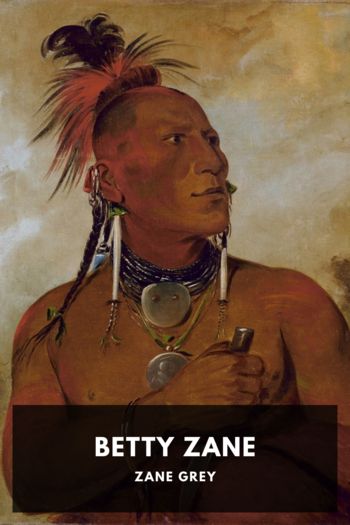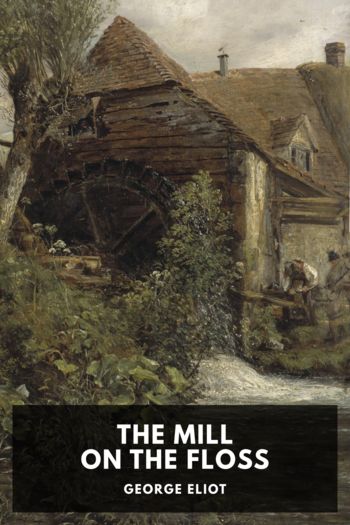Riders of the Purple Sage by Zane Grey (best thriller books to read .TXT) 📕

Description
In a small Mormon community in southern Utah, Jane Withersteen, a young, unmarried Mormon woman faces growing pressure to marry a local elder of her church. Elder Tull, a polygamist, already has two wives and seeks to marry Jane not just for her beauty, but to take control of the ranch her late father passed on to her.
Jane’s resistance to marriage only serves to increase the mounting resentment against “Gentiles” (non-Mormons) in the area. Bern Venters, one of Jane Withersteen’s ranch hands and potential suitor, becomes the focus of this resentment and is nearly killed by Elder Tull and his men before a mysterious rider interrupts the procedure. The rider, a man named Lassiter, is a gunslinger known for his exploits in other Mormon settlements further north.
Lassiter’s intercession on Venters’ behalf sets off a chain reaction of threats, violence, theft, and murder as Jane Withersteen fights to maintain both her ranch and her independence.
First published in 1912, Riders of the Purple Sage is considered to have played a prominent role in shaping the Western genre. It was Zane Grey’s best-selling book and has remained popular ever since.
Read free book «Riders of the Purple Sage by Zane Grey (best thriller books to read .TXT) 📕» - read online or download for free at americanlibrarybooks.com
- Author: Zane Grey
Read book online «Riders of the Purple Sage by Zane Grey (best thriller books to read .TXT) 📕». Author - Zane Grey
“What a place to hide!” muttered Venters. “I’ll climb—I’ll see where this thing goes. If only I can find water!”
With teeth tight shut he essayed the incline. And as he climbed he bent his eyes downward. This, however, after a little grew impossible; he had to look to obey his eager, curious mind. He raised his glance and saw light between row on row of shafts and pinnacles and crags that stood out from the main wall. Some leaned against the cliff, others against each other; many stood sheer and alone; all were crumbling, cracked, rotten. It was a place of yellow, ragged ruin. The passage narrowed as he went up; it became a slant, hard for him to stick on; it was smooth as marble. Finally he surmounted it, surprised to find the walls still several hundred feet high, and a narrow gorge leading down on the other side. This was a divide between two inclines, about twenty yards wide. At one side stood an enormous rock. Venters gave it a second glance, because it rested on a pedestal. It attracted closer attention. It was like a colossal pear of stone standing on its stem. Around the bottom were thousands of little nicks just distinguishable to the eye. They were marks of stone hatchets. The cliff-dwellers had chipped and chipped away at this boulder till it rested its tremendous bulk upon a mere pinpoint of its surface. Venters pondered. Why had the little stone-men hacked away at that big boulder? It bore no semblance to a statue or an idol or a godhead or a sphinx. Instinctively he put his hands on it and pushed; then his shoulder and heaved. The stone seemed to groan, to stir, to grate, and then to move. It tipped a little downward and hung balancing for a long instant, slowly returned, rocked slightly, groaned, and settled back to its former position.
Venters divined its significance. It had been meant for defense. The cliff-dwellers, driven by dreaded enemies to this last stand, had cunningly cut the rock until it balanced perfectly, ready to be dislodged by strong hands. Just below it leaned a tottering crag that would have toppled, starting an avalanche on an acclivity where no sliding mass could stop. Crags and pinnacles, splintered cliffs, and leaning shafts and monuments, would have thundered down to block forever the outlet to Deception Pass.
“That was a narrow shave for me,” said Venters, soberly. “A balancing rock! The cliff-dwellers never had to roll it. They died, vanished, and here the rock stands, probably little changed … But it might serve another lonely dweller of the cliffs. I’ll hide up here somewhere, if I can only find water.”
He descended the gorge on the other side. The slope was gradual, the space narrow, the course straight for many rods. A gloom hung between the up-sweeping walls. In a turn the passage narrowed to scarce a dozen feet, and here was darkness of night. But light shone ahead; another abrupt turn brought day again, and then wide open space.
Above Venters loomed a wonderful arch of stone bridging the canyon rims, and through the enormous round portal gleamed and glistened a beautiful valley shining under sunset gold reflected by surrounding cliffs. He gave a start of surprise. The valley was a cove a mile long, half that wide, and its enclosing walls were smooth and stained, and curved inward, forming great caves. He decided that its floor was far higher than the level of Deception Pass and the intersecting canyons. No purple sage colored this valley floor. Instead there were the white of aspens, streaks of branch and slender trunk glistening from the green of leaves, and the darker green of oaks, and through the middle of this forest, from wall to wall, ran a winding line of brilliant green which marked the course of cottonwoods and willows.
“There’s water here—and this is the place for me,” said Venters. “Only birds can peep over those walls, I’ve gone Oldring one better.”
Venters waited no longer, and turned swiftly to retrace his steps. He named the canyon Surprise Valley and the huge boulder that guarded the outlet Balancing Rock. Going down he did not find himself attended by such fears as had beset him in the climb; still, he was not easy in mind and could not occupy himself with plans of moving the girl and his outfit until he had descended to the notch. There he rested a moment and looked about him. The pass was darkening with the approach of night. At the corner of the wall, where the stone steps turned, he saw a spur of rock that would serve to hold the noose of a lasso. He needed no more aid to scale that place. As he intended to make the move under cover of darkness, he wanted most to be able to tell where to climb up. So, taking several small stones with him, he stepped and slid down to the edge of the slope where he had left his rifle and boots. He placed the stones some yards apart. He left the rabbit lying upon the bench where the steps began. Then he addressed a keen-sighted, remembering gaze to the rim-wall above. It was serrated, and between two spears of rock, directly in line with his position, showed a zigzag crack that at night would let through the gleam of sky. This settled, he put on his belt and boots and prepared to descend. Some consideration was necessary to decide whether or not to leave





Comments (0)